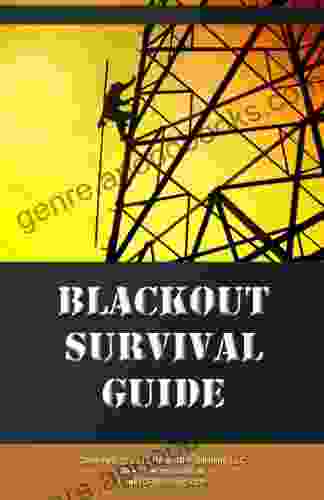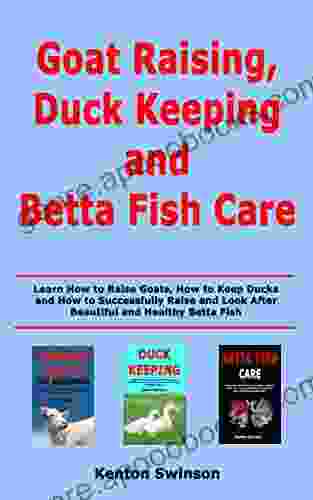Prepare for the Dangers of Power Failure: A Comprehensive Guide and Essential Emergency Strategies

Power failures pose significant threats to modern society. They can disrupt critical infrastructure, cripple communication systems, and jeopardize public health and safety. With increased reliance on electricity in all aspects of life, even brief outages can cause widespread inconvenience and economic losses.
This article provides a comprehensive guide and essential emergency strategies to prepare for and mitigate the dangers of power outages. By understanding the potential hazards, implementing proactive measures, and developing contingency plans, individuals and communities can increase their resilience and ensure their well-being in the face of power failures.
4.2 out of 5
| Language | : | English |
| File size | : | 262 KB |
| Text-to-Speech | : | Enabled |
| Screen Reader | : | Supported |
| Enhanced typesetting | : | Enabled |
| Word Wise | : | Enabled |
| Print length | : | 16 pages |
| Lending | : | Enabled |
Causes of Power Failures
Power failures can be caused by a wide range of factors, including:
- Natural disasters (e.g., hurricanes, earthquakes, floods)
- Equipment malfunctions
- Cyberattacks
- Human error
- Extreme weather events (e.g., ice storms)
Potential Dangers of Power Failures
Power failures can pose significant dangers to individuals and communities, including:
- Loss of essential services: Power outages can disrupt or disable critical services such as water supply, sewage treatment, and healthcare facilities.
- Communication disruptions: Power failures can disrupt communication systems, preventing individuals from contacting emergency services or accessing vital information.
- Transportation hazards: Power outages can disrupt traffic signals and affect public transportation systems, increasing the risk of accidents.
- Health risks: Power outages can compromise medical equipment and refrigeration, jeopardizing the health and safety of vulnerable individuals.
- Economic losses: Power failures can result in significant economic losses for businesses and industries, leading to revenue loss and disruption of production.
Emergency Preparedness Measures
To mitigate the dangers of power failures, it is crucial to implement comprehensive emergency preparedness measures. These include:
1. Establish a Communication Plan
Establish a communication plan with family members, friends, or neighbors, outlining designated meeting places and alternative communication methods (e.g., cell phones with charged batteries, walkie-talkies).
2. Secure Essential Supplies
Assemble an emergency kit that includes essential items such as:
- Non-perishable food and water (3-day supply per person)
- First-aid kit
- Flashlights and extra batteries
- Battery-powered or hand-crank radio
- Hygiene supplies
Cash and important documents
Consider additional items for specific needs, such as medications, baby supplies, or pet food.
3. Plan for Alternative Lighting
Ensure adequate lighting during a power failure by:
- Having a sufficient supply of flashlights and extra batteries.
- Purchasing solar-powered or battery-operated lanterns.
- Utilizing candles safely in well-ventilated areas.
4. Protect Essential Appliances
Protect essential appliances (e.g., refrigerators, freezers) from power surges by:
- Unplugging them before a power outage occurs.
- Using surge protectors when power is restored.
5. Prepare for Heating and Cooling
Plan for alternative heating and cooling options during power outages, especially in extreme weather conditions:
- Keep warm by wearing layers of clothing and utilizing blankets.
- Use battery-powered fans or open windows for ventilation during hot weather.
6. Develop a Neighborhood Support System
Establish a neighborhood support system to assist elderly neighbors, individuals with disabilities, or those with specific needs during power outages.
Contingency Plans
In addition to emergency preparedness measures, it is essential to develop contingency plans for various scenarios. These include:
1. Short-Term Power Outages
For outages lasting less than 24 hours, focus on:
- Conserving energy by turning off unnecessary appliances and lights.
- Using alternative lighting and heating/cooling options.
- Relying on battery-powered devices for communication and information.
2. Long-Term Power Outages
In the event of outages exceeding 24 hours, additional measures may be necessary:
- Seek shelter in designated community centers or public spaces with power backup.
- Consider evacuation if local infrastructure is severely affected.
- Contact local authorities or disaster relief organizations for assistance.
Long-Term Energy Resilience
For increased resilience against power failures, consider long-term strategies:
1. Install Backup Power Systems
Invest in backup power systems such as:
- Portable generators (gasoline or diesel powered)
- Solar panels with battery storage
- Uninterruptible power supplies (UPS) for essential electronics
2. Explore Renewable Energy Sources
Embrace renewable energy sources for sustainable backup power:
- Solar panels with battery storage
- Wind turbines
- Micro-hydro systems
3. Practice Energy Efficiency
Reduce energy consumption through:
- Utilizing energy-efficient appliances
- Implementing smart home energy management systems
- Adopting energy-saving habits (e.g., turning off lights when leaving a room)
Power failures pose significant risks to modern society. By understanding the potential hazards, implementing proactive emergency preparedness measures, and developing
4.2 out of 5
| Language | : | English |
| File size | : | 262 KB |
| Text-to-Speech | : | Enabled |
| Screen Reader | : | Supported |
| Enhanced typesetting | : | Enabled |
| Word Wise | : | Enabled |
| Print length | : | 16 pages |
| Lending | : | Enabled |
Do you want to contribute by writing guest posts on this blog?
Please contact us and send us a resume of previous articles that you have written.
 Book
Book Novel
Novel Page
Page Chapter
Chapter Text
Text Story
Story Genre
Genre Reader
Reader Library
Library Paperback
Paperback E-book
E-book Magazine
Magazine Newspaper
Newspaper Paragraph
Paragraph Sentence
Sentence Bookmark
Bookmark Shelf
Shelf Glossary
Glossary Bibliography
Bibliography Foreword
Foreword Preface
Preface Synopsis
Synopsis Annotation
Annotation Footnote
Footnote Manuscript
Manuscript Scroll
Scroll Codex
Codex Tome
Tome Bestseller
Bestseller Classics
Classics Library card
Library card Narrative
Narrative Biography
Biography Autobiography
Autobiography Memoir
Memoir Reference
Reference Encyclopedia
Encyclopedia Matt Lucas
Matt Lucas Traci Hunter Abramson
Traci Hunter Abramson Thomas Hardy
Thomas Hardy Marilynn Ham
Marilynn Ham Richard Baker
Richard Baker Kim Newman
Kim Newman Miroslav Kucera
Miroslav Kucera Randy Weinstein
Randy Weinstein Kate Meader
Kate Meader Martha Mier
Martha Mier Yoko Danno
Yoko Danno Suzy Pepper Rollins
Suzy Pepper Rollins Matthew Ward
Matthew Ward Pinoy Stitch
Pinoy Stitch Meg Gardiner
Meg Gardiner Stephen Tvedten
Stephen Tvedten Mark R Brewer
Mark R Brewer The History Journals
The History Journals P D Workman
P D Workman Stephen Samuel Smith
Stephen Samuel Smith
Light bulbAdvertise smarter! Our strategic ad space ensures maximum exposure. Reserve your spot today!
 Cade SimmonsFollow ·6.6k
Cade SimmonsFollow ·6.6k Michael ChabonFollow ·17.8k
Michael ChabonFollow ·17.8k Tom HayesFollow ·9.6k
Tom HayesFollow ·9.6k Spencer PowellFollow ·19.1k
Spencer PowellFollow ·19.1k Dion ReedFollow ·16.9k
Dion ReedFollow ·16.9k Willie BlairFollow ·15.2k
Willie BlairFollow ·15.2k D'Angelo CarterFollow ·12.4k
D'Angelo CarterFollow ·12.4k Daniel KnightFollow ·6.5k
Daniel KnightFollow ·6.5k

 Finn Cox
Finn CoxCarmen Suite For Flute Quartet (G Alto Flute) ( Carmen...
Experience the Magic of...

 Andy Cole
Andy ColeUncover Hidden Truths: A Comprehensive Guide to Detecting...
: The Silent...

 Ken Simmons
Ken SimmonsUnleash Your Potential: Transform Frustration and...
Are you tired of feeling...

 Rick Nelson
Rick NelsonHard To Kill: A Gripping Thriller That Will Keep You on...
Tom Rollins is a...

 Ivan Turner
Ivan TurnerUnleash the Power of Your Breath: Discover Breath...
In the tapestry of life, where stress and...
4.2 out of 5
| Language | : | English |
| File size | : | 262 KB |
| Text-to-Speech | : | Enabled |
| Screen Reader | : | Supported |
| Enhanced typesetting | : | Enabled |
| Word Wise | : | Enabled |
| Print length | : | 16 pages |
| Lending | : | Enabled |














